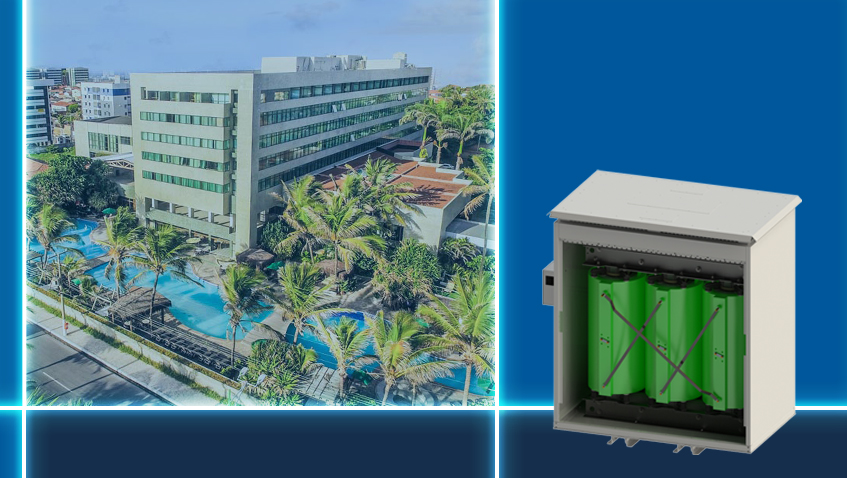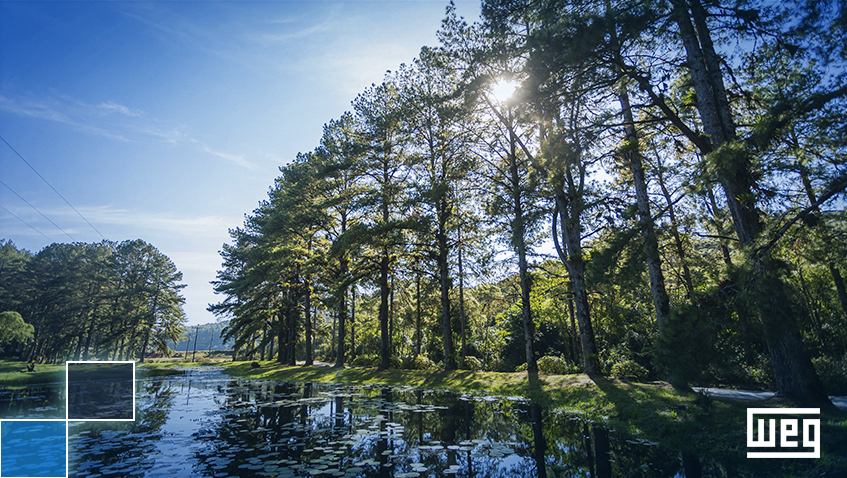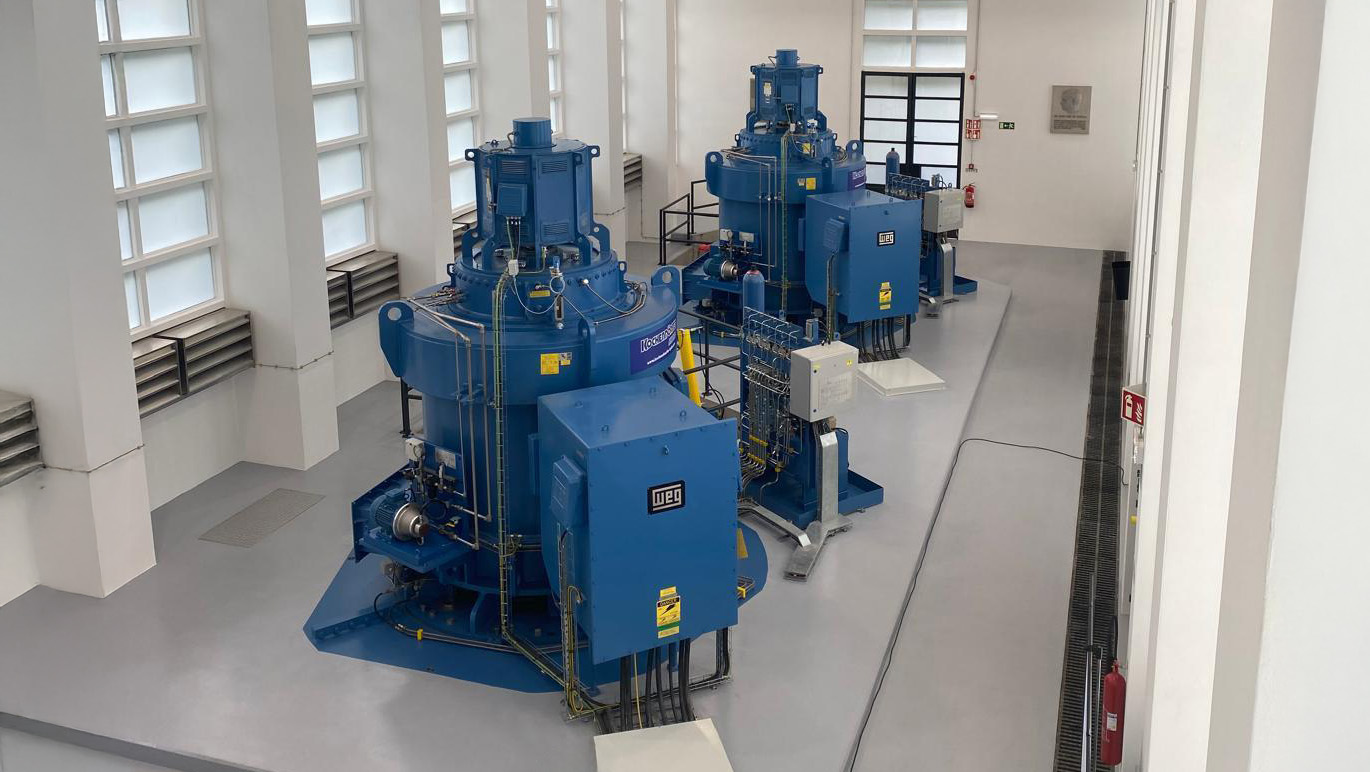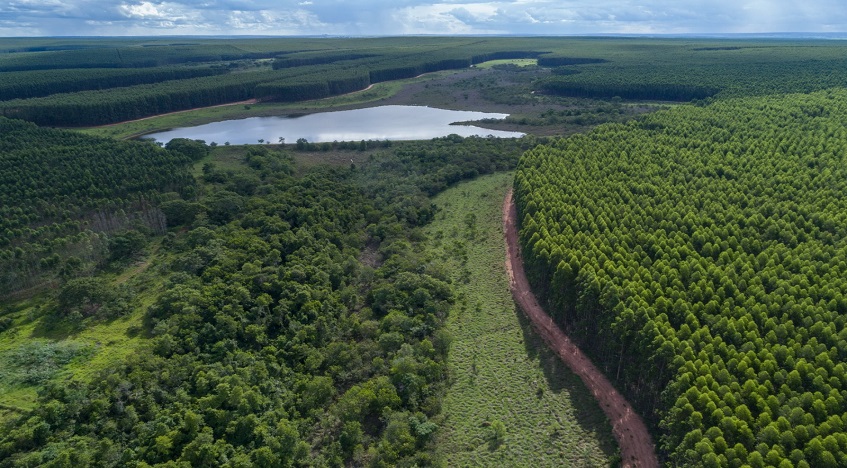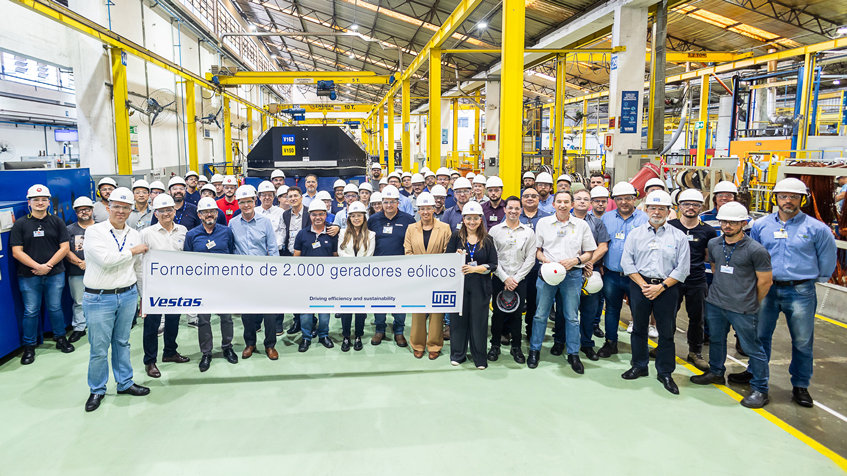Opérations circulaires et efficaces
L'économie circulaire cherche à maximiser la valeur des ressources tout en minimisant le gaspillage et les impacts environnementaux. Dans ce modèle, les produits sont conçus pour être durables, réparables et recyclables, encourageant la réutilisation et le recyclage des matériaux. Au lieu de suivre le modèle linéaire traditionnel de production et de consommation, où les produits sont fabriqués, utilisés et jetés, l'économie circulaire promeut l'idée d'un cycle continu, où les matériaux sont maintenus en utilisation le plus longtemps possible.
Cette approche contribue non seulement à la conservation des ressources naturelles, mais stimule également l'innovation, la création d'emplois et la croissance économique durable, devenant essentielle pour faire face aux défis mondiaux d'aujourd'hui, tels que le changement climatique et la pénurie de ressources.
Concrétisant l'engagement de WEG, nous avons des certifications ISO 14.001 démontrant la gestion environnementale dans les opérations de l'entreprise.
Programmes & Pratiques
Déchets et énergie
Déchets solides
WEG dispose d'un système de collecte sélective des déchets dans ses opérations. Ainsi, les déchets sont séparés et envoyés aux recycleurs de chacun des matériaux, permettant ainsi leur valorisation réintroduction des matériaux dans les cycles de production les plus divers. Il est important de souligner qu'une partie des déchets générés par les opérations sont recyclés par WEG lui-même, retournant ainsi au processus et faisant partie de ses produits. Tous les déchets sont envoyés à des entreprises écologiquement responsables, sélectionnées et développées par l'équipe de gestion environnementale de WEG.
Énergie
WEG a une politique d'efficacité énergétique depuis 2012, qui démontre son engagement envers la gestion de cette ressource. Cette politique se traduit par des actions de surveillance et de réduction de la consommation d'énergie, contribuant ainsi à l'amélioration de l'environnement. WEG s'efforce de rendre ses sources d'énergie de plus en plus propres, renouvelables et durables.
Eau, effluents et ressources hydriques
WEG surveille la consommation d'eau de ses opérations et dispose de nombreux contrôles opérationnels qui garantissent une gestion efficace de cette ressource, évitant ainsi le gaspillage et favorisant une consommation consciente. Tous les effluents générés par les opérations sont correctement traités et régulièrement surveillés, afin de garantir le respect des législations et de minimiser les impacts sur les différents parties prenantes.
Une partie des effluents traités dans les opérations sont réutilisés dans les processus internes, certaines stations d'épuration permettant jusqu'à 100% de réutilisation de l'effluent traité. Nous adoptons des initiatives axées sur la réduction de la consommation d'eau et de la production d'effluents, par le biais du contrôle des fuites, de la surveillance de la consommation et du soutien aux programmes qui engagent tous les employés vers cet objectif, comme le KaizenWEG et le WEG Manufacturing System.

Investments and expenses in the environment
Environmental investments fall into three categories:
- Environmental control: related to treatment and disposal of residues, treatment of atmospheric and liquid emissions, environmental liability insurances, depreciation of devices and expenses with materials and maintenance.
- Equipment: related to the purchase of equipment for environmental control.
- Management: related to the remuneration of training staff who act in environmental management, research and development, and certification of environmental management systems.
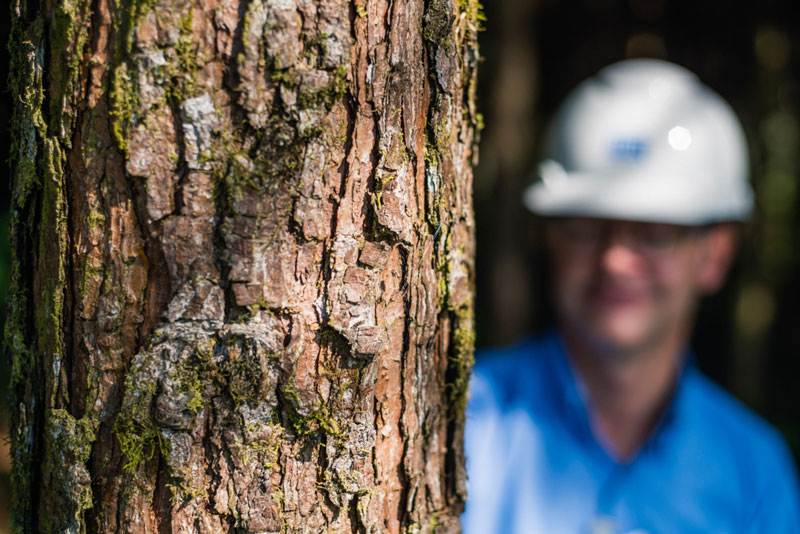
Sustainable packaging and biodiversity preservation
We have a packaging factory, RF Reflorestadora, in Brazil. This unit produces all the wooden packaging used in our various product lines. To that end, we have our own reforestation areas that guarantee the continuous supply of wood and the preservation of this natural resource and areas of natural forests, legal reserves and permanent preservation areas that help in the preservation of the local biodiversity.
The areas comply with all legislation and legal requirements, including an area of conservation of native forests much larger than the minimum established for the legal reserve.
Furthermore, WEG promotes and supports conscious reforestation and nature conservation initiatives and invests in the afforestation of its industrial parks.
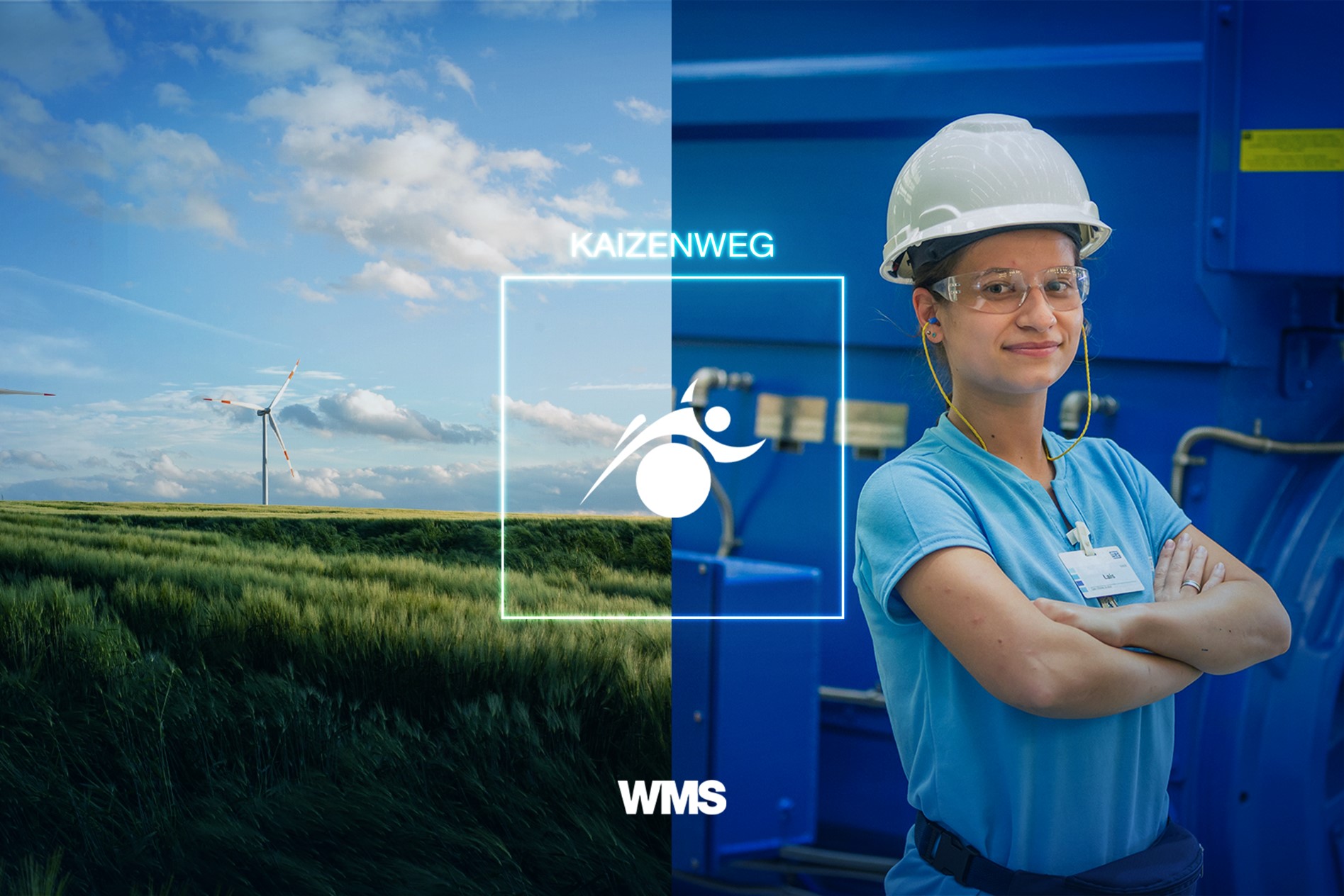
Kaizen WEG
KaizenWEG is one of WEG's forms of participative management, where all employees are encouraged to promote improvements in their work environment or in any other areas of the company, identifying waste, analyzing causes and taking part in improvement implementation teams.
The collective search for operational excellence and sustainability in a scenario of verticalization of processes makes participative management a key element in enhancing WEG's results.
2019 to 2021 average: 1144
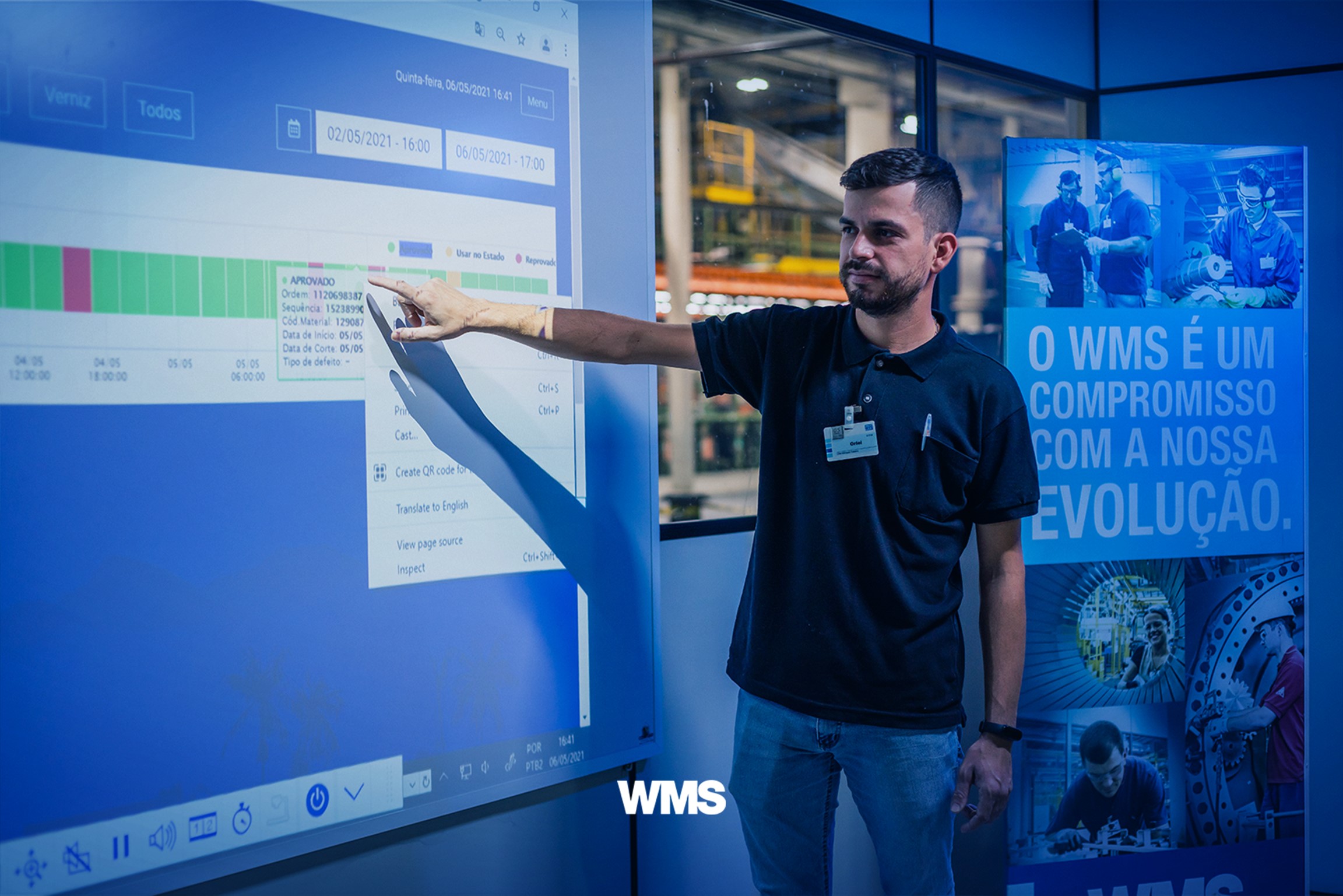
WMS
WEG's continuous improvement management system is WMS, whose main objective is to identify and eliminate losses and waste.
Results are maximized through safety, quality, cost and GHG (greenhouse gas) emission prioritization matrices, which guide the development of projects to optimize or eliminate such waste, contributing to a more efficient and sustainable world.
In addition to the optimization work fronts, multidisciplinary teams act as central points for continuous improvement, bringing innovations and disruptions to our processes.
One of these central points is the Environment and Energy pillar, which aims at and systematizes the reduction of environmental impacts, working to reduce or eliminate the generation of waste and emissions, the consumption of energy resources, chemical cleaning and inputs in general.
WEG Replacement Plan (Available only in Brazil)
Recycling is a serious subject for WEG, extended up to business. By means of the program for reusing electric motors, the “Exchange Plan”, the company has granted a discount on the purchase of a new motor with performance above the law requirements in exchange for a used one. Besides the financial benefit to the customers, the initiative ensures that the low-efficiency motor is no longer used. Once collected by the company, the motors are dismantled and separated into parts for distribution to accredited and tracked recyclers.
Benefits
Reduction of electric energy consumption
Reliability of the plant
Reduction of operating costs
Factory Warranty
Standard products - offer complete interchangeability with motors already installed
Item | 2019 | 2020 | 2021 | 2022 | 2023 |
Products sold that can be reused or recycled* (%) – Weight basis | 65 | 66 | 68 | 73 | 65 |
Products that were actually reused or recycled by the company * (%) – Weight basis | 21 | 13 | 8 | 5 | 4.3 |
* It takes into account only the products placed and recalled in the Brazilian market
Investments in Environment
Environmental investments are classified into three categories:
Environmental control: Related to treatment and disposal of waste, treatment of atmospheric and liquid emissions, environmental liability insurances and depreciation of devices and expenses with materials and maintenance.
Equipment: Related to the purchase of equipment for environmental control.
Management: Related to the remuneration of training personnel who act in environmental management, research and development, and certification of environmental management systems.
Below is the amount invested in each category in Brazil.
Investiment | 2021 | 2021 | 2022 | 2022 | 2023 | 2023 |
Environmental Controls | 8,678 | 54.19 | 10,234 | 52.4 | 12,248 | 48.4 |
Equipment | 1,329 | 8.30 | 1,788 | 9.2 | 1,819 | 7.2 |
| Management | 6,006 | 37.51 | 7,519 | 38.5 | 11,261 | 44.4 |
| TOTAL | 16,013 | 100 | 19,540 | 100 | 25,328 | 100 |
Enviromental Certification
In 2023, considering the scope of employees, 74.5% of the WEG group was covered by ISO 14001 certification.
Click here to access the certificates
Environmental Audits
WEG has an environmental audit cycle process that covers all of its industrial operations.
In annual environmental audit process, WEG guarantees compliance with environmental legislation in all industrial operations.
Performance Indicators
In 2023, the scope of monitored units was expanded, including the company's business addresses. Thus, 100% of WEG's global addresses are now included in the indicators.
Solid Waste
WEG has a waste selective collection system in its operations. Waste is separated and sent to recyclers, thus enabling its recovery and the reintroduction of materials in the most diverse production cycles. Part of the waste generated in operations is also recycled by WEG itself, thus returning to the process and forming part of our products.
Item | Unit | 2019 | 2020 | 2021 | 2022 | 2023 |
Total hazardous waste recycled/reused | Metric Tons | 0 | 0 | 0 | 0 | 3,101 |
Total hazardous waste disposed | Metric Tons | 5,822 | 4,905 | 5,484 | 6,511 | 5,944 |
Hazardous waste landfilled | Metric Tons | 1,266 | 1.338 | 1.138 | 850 | 0 |
Hazardous waste incinerated with energy recovery | Metric Tons | 0 | 0 | 0 | 0 | 0 |
| Hazardous waste incinerated without energy recovery | Metric Tons | 4,556 | 3,567 | 4,346 | 5,661 | 5,944 |
Hazardous waste with unknown | Metric Tons | 0 | 0 | 0 | 0 | 0 |
Data Coverage (as % of denominator) | % employees | 100 | 100 | 100 | 100 | 100 |
Energy
WEG has had an Energy Efficiency Policy since 2012, in which it shows its commitment to the management of this input. This policy develops actions to monitor and reduce energy consumption, which contributes to improving the environment. WEG intends to increasingly make its energy sources cleaner, renewable and sustainable.
Total Energy Consumption | Unit | 2019 | 2020 | 2021 | 2022 | 2023 |
Total non-renewable energy consumption | MWh | 466,737 | 462,976 | 499,355 | 478,872 | 430,848 |
Total renewable energy consumption | MWh | 0 | 0 | 56,000 | 86,918 | 127,709 |
Total energy consumption (non-renewable + renewable) | MWh | 466,737 | 462,976 | 555,355 | 565,790 | 558,557 |
Data coverage (as % of denominator) | percentage of employee | 100 | 100 | 100 | 100 | 100 |
Renewable energy acquisition
In 2023, WEG guaranteed that 22.9% of energy consumption came from renewable sources with guarantee of origin through self-production, purchase of renewable energy certificates (I-REC) and bilateral contracts.
In 2024, WEG will have approximately 90% of Brazil's electricity consumption from renewable sources, which is equivalent an average of 45 MW.
Atmospheric emissions
WEG monitors atmospheric emissions related to volatile organic compounds. Below is the result of emissions related to equipment monitored in recent years.
Item | 2019 | 2020 | 2021 | 2022 | 2023 |
Emissions of volatile organic compounds - VOC (t/year) | 93,5 | 135,2 | 114,5 | 139,3 | 382,6 |
coverage rate (%) | 56 | 56 | 56 | 61 | 72 |
Environmental Violations
One of WEG's top priorities is compliance with the environmental legislation applicable to its operations. In the last 4 years, there were no evidence of environmental fines applied to WEG businesses.
